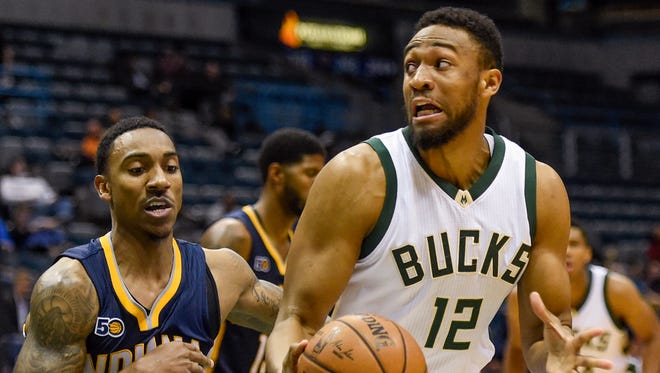Could one-and-done be an issue again?

ATLANTA -- Ben Simmons spent a lone season in college basketball at LSU, trying to fit in with immense skill and share the ball, and it prompted more debate about the NBA’s continued push to ban teenagers from the league.
Is it justifiable forcing a player such as Simmons to play in college when he obviously has greater skills?
If NBA Commissioner Adam Silver had his way, Simmons would have been back at LSU for his sophomore year.
Simmons, 19, was taken first overall by the Philadelphia 76ers. In one of the early scrimmages with the team, he suffered a broken bone in his foot and is out for several weeks to start the season.
Carmelo Anthony has seen Knicks built up, torn down, built up again
This debate is especially relevant because NBA players can opt out of the collective bargaining agreement with the league Dec.15. Current players, along with the NBA, presumably will decide the future of teenagers with a new CBA — or maybe they won’t.
“It’s not high on the list,” said the Atlanta Hawks’ Kyle Korver, who is a member of the National Basketball Players Association executive committee.
The issues surrounding the sharing of revenue from the massive TV deal — the salary cap ballooning from $67 million to $108 million in two years — will be getting more attention than the one-and-done.
Korver, while stressing it was his personal opinion, has doubts about whether 18-year-olds should be allowed to play in the NBA. The first-year salary for an early-first-round pick can be about $5 million, give or take 20%.
“I’m going to keep fighting for the health of the league,” said Korver, whose co-members on the executive committee include the Cleveland Cavaliers’ LeBron James and the Golden State Warriors’ Stephen Curry. “This is not about making as much as you can, as fast as you can. We need to make sure guys can handle the social and financial pressures.”
There is a difference of opinion among NBA players on this.

Korver turned 35 in March. This will be his 14th season in the NBA.
Compare his take with that of Jabari Parker, the Milwaukee Bucks forward who played one year at Duke and turned 21 in March.
“Some of our greatest players did it,” Parker said in reference to players such as James and Kobe Bryant, who went directly to the NBA from high school. “If this is going to be your occupation, why not do it as soon as possible?
“If they can handle it, a player should be able to go. It depends on whether you are ready or not.”
Parker had a solid inner circle, which included his father, Sonny, who played in the NBA, and Duke coach Mike Krzyzweski. Parker is a thoughtful player, more wise than many 21-year-olds in any profession. He was ready, but what about others?
A few things you should know about the NBA, the NCAA and the one-and-done.
College players can declare for the draft, go through the NBA combine in May and receive feedback on where they will go in the draft. The player has 10 days after the combine to decide whether he wants to enter the draft or return to college.
Virtual reality will give NBA fans game experience
The player also can hold one individual tryout with a team.
Just because a player declares for the draft does not mean he will get an invitation to the combine in Chicago. It is invitation-only.
Mark Emmert, the NCAA president, said he would rather players go directly to the NBA out of high school than be part of an artificial system of pretending to be college students for a year.
Silver wants players to spend two years in college.
Fourteen players taken in this year’s draft were college freshmen last season.
So throw into this debate — no college, one year of college or two years of college —a hybrid, data-science model proposed by Intensity, a full-service economics firm based in San Diego. One of Intensity’s directors, Danny Schayes, played basketball at Syracuse (1977-81) and in the NBA (1981-1999).
“The solution has always been where do you draw the line, and it has always been a one-size-fits-all solution,” Schayes said. “Is 18 (years old) the right number. Is 19 the right number? Is 20 the right number?”
Intensity analyzed 1,700 players who had different entry points to the NBA: from high school to after their senior year in college.
“You want to maximize the guys who are LeBron and minimize the guys who come out too early and fail,” Schayes said.
There would be a “graduated” line in the sand, according to the Intensity model, Schayes said. The study declared that NBA scouts know how to pick the top players, no matter their age.
Players rated 1 through 15 by the NBA can come out of high school, and players rated 15 through 30 can be drafted after their freshman season in college. After their sophomore year, everybody is eligible for the draft.
Schayes also said the “perverse incentive” of players leaving college for money should be removed by allowing players to make money signing autographs or doing commercials. He insists more would stay in school.
“It prevents the marginal player from coming out, the guy being forced by his agent to go,” Schayes said. “It allows for the players who are LeBron and who are Jabari Parker, and it limits the collateral damage.”